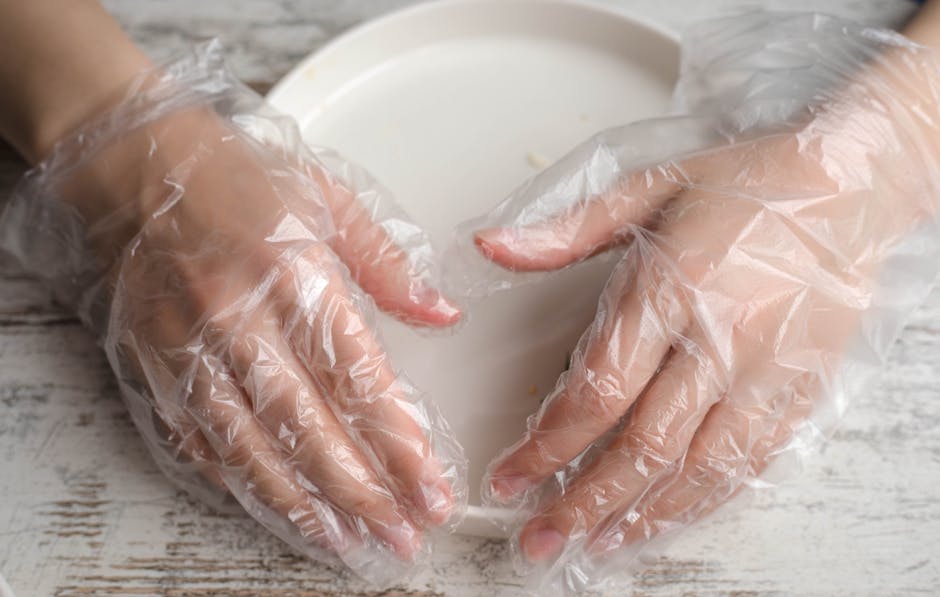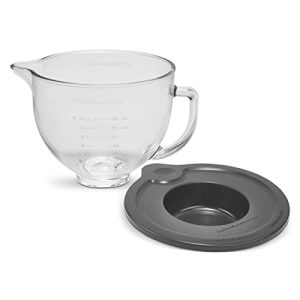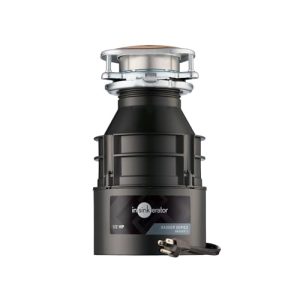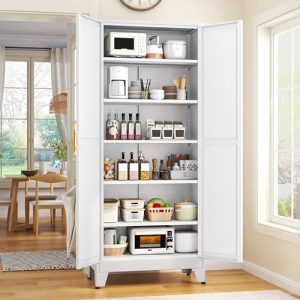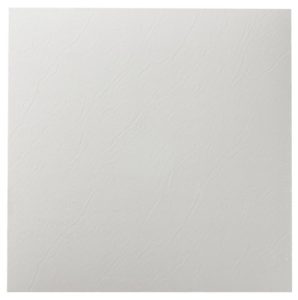Have you ever wondered what to do with your old kitchen blender when it stops working or you upgrade to a new one? Throwing it in the trash isn’t the best choice for you or the environment.
Knowing how to dispose of your kitchen blender properly can save you hassle, protect the planet, and maybe even put a little money back in your pocket. You’ll discover simple, practical steps to get rid of your blender safely and smartly.
Keep reading—you’ll be surprised how easy and rewarding it can be!
Reasons To Dispose Of A Blender
Knowing when to dispose of your kitchen blender is crucial for both safety and efficiency. Blenders don’t last forever, and holding on to one that’s past its prime can lead to frustration or even accidents. Understanding the reasons to replace your blender helps you keep your kitchen running smoothly and your smoothies tasting great.
Signs It’s Time To Replace
Is your blender making strange noises or struggling to blend simple ingredients? These are clear signs it might be time to say goodbye. If the motor sounds like it’s working overtime or the blades no longer spin properly, you’re probably dealing with wear and tear that can’t be fixed easily.
Another key sign is leaks. If you notice liquid seeping from the base or jar, this could mean the seals are broken or cracked. Using a leaking blender can create a mess and even damage your countertop or electrical components.
Have you checked if your blender still blends evenly? If your smoothies come out chunky or your soups have lumps, the blades might be dull or damaged. Sometimes, these issues are subtle at first but get worse over time, affecting the quality of your food.
Common Blender Issues
- Overheating:Blenders that heat up quickly during use can risk burning out the motor. This reduces performance and can be a safety hazard.
- Blade Damage:Bent or dull blades won’t chop or blend efficiently. This leads to uneven texture and longer blending times.
- Electrical Problems:Flickering power or failure to start may indicate faulty wiring or internal damage. This is a red flag for safety and functionality.
- Cracked Jars:Cracks in the blender jar can cause leaks and contamination. Even small cracks can worsen with use.
Have you noticed any of these issues with your blender? Ignoring them can turn a helpful kitchen tool into a source of stress. Sometimes, investing in a new blender saves you time, effort, and even money in the long run.
Preparing Your Blender For Disposal
Preparing your blender for disposal helps reduce waste and makes recycling easier. Proper preparation ensures safe handling and environmental care. Start by cleaning and removing all detachable parts. Then separate components by material type for recycling or disposal.
Cleaning And Removing Parts
Unplug the blender before cleaning. Remove the jar, lid, blade assembly, and gasket carefully. Wash these parts with warm, soapy water. Dry them completely to avoid mold or rust. Wipe down the base with a damp cloth only. Do not submerge the motor base in water. Removing parts helps in sorting and recycling later.
Separating Components
Sort parts by material type to simplify disposal:
- Glass or plastic jars
- Metal blades and screws
- Plastic lids and gaskets
- Electrical base containing motor
Check local recycling rules for each material. Separate hazardous parts like batteries or electronics for special disposal. Proper separation improves recycling success and lowers environmental impact.
Eco-friendly Disposal Methods
Recycle blender parts at local e-waste centers to keep harmful materials out of landfills. Donate working blenders to charity or repurpose parts for crafts and repairs.
Eco-friendly disposal of kitchen blenders helps the environment. Old appliances often end up in landfills. This increases waste and pollution. There are better ways to dispose of them. Consider recycling, donation, or creative upcycling. Each method reduces waste and helps the planet.Recycling Options
Recycling your old blender is a smart choice. Many local recycling centers accept small appliances. Check with your local waste management facility. They often provide details on recycling programs. Some manufacturers offer take-back programs. They recycle old units responsibly. Look for certified e-waste recyclers. This ensures your blender is recycled correctly.Donation And Reuse
Donating your blender gives it a second life. Many charities accept small appliances. Ensure your blender is in working condition. Local thrift stores or community centers might need it. Schools and shelters often appreciate functional appliances. You can also list it on online platforms. This connects you with people who need it.Upcycling Ideas
Upcycling transforms old blenders into something new. Use the blender’s jar as a unique flower vase. Turn the base into a lamp stand. Get creative with paint and craft supplies. Make a bird feeder from the blender parts. Upcycling is a fun, eco-friendly project. It gives your old blender a new purpose.Safe Disposal Practices
Safe disposal practices protect the environment and human health. Kitchen blenders contain electronic parts and materials that need careful handling. Throwing blenders in the trash can cause pollution and waste valuable resources. Following proper steps ensures these items are recycled or disposed of correctly.
Handling Electronic Waste
Blenders are considered electronic waste. They contain metals, plastics, and circuits. These parts can harm the environment if not disposed of properly. Separate the blender from regular trash. Remove batteries if possible and recycle them separately. Take the blender to a certified e-waste recycling center. These facilities recycle or dispose of electronic parts safely.
Local Disposal Regulations
Each area has rules for electronic waste disposal. Check with your local waste management office or website. Some places offer special collection days for e-waste. Others have drop-off locations or retail take-back programs. Follow local guidelines to avoid fines and help protect the environment. Proper disposal supports community health and sustainability efforts.
Where To Dispose Of Blenders
Knowing where to dispose of blenders helps protect the environment. Blenders contain plastic, metal, and electronic parts. These materials need proper handling to avoid pollution. Several options exist for safe disposal. Choose the best place based on convenience and local rules.
Recycling Centers
Recycling centers accept blenders and other small appliances. They separate parts to recycle metal and plastic. Locate a nearby center that handles electronics. Some centers may require you to remove batteries or cords first. Drop off your blender during business hours for proper recycling.
Retailer Take-back Programs
Many stores offer take-back programs for old appliances. Check if your local retailer accepts used blenders. Some stores accept items when you buy a new one. Others may have special collection bins. This option is easy and supports responsible disposal.
Community Collection Events
Communities hold collection events for electronic waste. These events accept blenders and other household items. They often run on weekends or specific dates. Find local event schedules through community websites or bulletin boards. Drop off your blender to keep it out of landfills.
Tips To Extend Blender Life
Extending the life of your kitchen blender saves money and reduces waste. Simple care steps keep the blender working well for years. Proper use and regular upkeep prevent damage and wear.
Regular Maintenance
Clean the blender after every use to avoid residue buildup. Use warm, soapy water and a soft brush to clean blades carefully. Make sure to dry all parts completely before reassembling.
Check the blender’s seals and gaskets often. Replace any worn or cracked parts to prevent leaks. Lubricate the blade assembly if the manual suggests it.
Store the blender in a dry place away from direct sunlight. Avoid letting dust or moisture collect on the motor base.
Proper Usage
Do not overload the blender with too many ingredients. Overfilling strains the motor and can cause overheating. Cut large pieces into smaller chunks for smoother blending.
Use the blender for its intended purposes only. Avoid blending hard items like ice cubes or nuts without checking the model’s limits. Follow the recommended running time to prevent motor damage.
Turn off the blender before removing the jar or cleaning the blades. Avoid running the blender empty, which can harm the motor.
Frequently Asked Questions
How Can I Safely Dispose Of A Kitchen Blender?
To safely dispose of a kitchen blender, first unplug and clean it. Separate recyclable parts like glass or metal. Check local e-waste programs or recycling centers for appliance drop-off. Avoid throwing it in regular trash to reduce environmental harm.
Where To Recycle Old Kitchen Blenders Near Me?
Search for local e-waste recycling centers or municipal waste facilities. Many stores offer appliance take-back programs. Some charities accept working blenders for donation. Always confirm accepted items before dropping off.
Can I Donate A Used Kitchen Blender?
Yes, if the blender is clean and functional, many charities accept it. Donating helps reduce waste and supports those in need. Check with local shelters or thrift stores for donation guidelines.
Should Blender Parts Be Separated Before Disposal?
Yes, separate glass, plastic, and metal parts for proper recycling. This helps recycling centers process materials efficiently. Remove batteries or electrical components and dispose of them according to hazardous waste rules.
Conclusion
Disposing of a kitchen blender does not have to be hard. Find local recycling centers that accept electronics. Remove all parts and clean the blender before disposal. Donate working blenders to charity or give them away. Avoid throwing blenders in the trash to protect the environment.
Small steps make a big difference for our planet. Choose safe and responsible methods to dispose of your blender. Keep your kitchen clutter-free and eco-friendly at the same time. Simple actions help create a cleaner and healthier world.

Sophie Hartwell is the founder of KitchenQuik.com, where she shares kitchen tips, smart cooking hacks, and the best product picks to make everyday cooking easier and more enjoyable.
